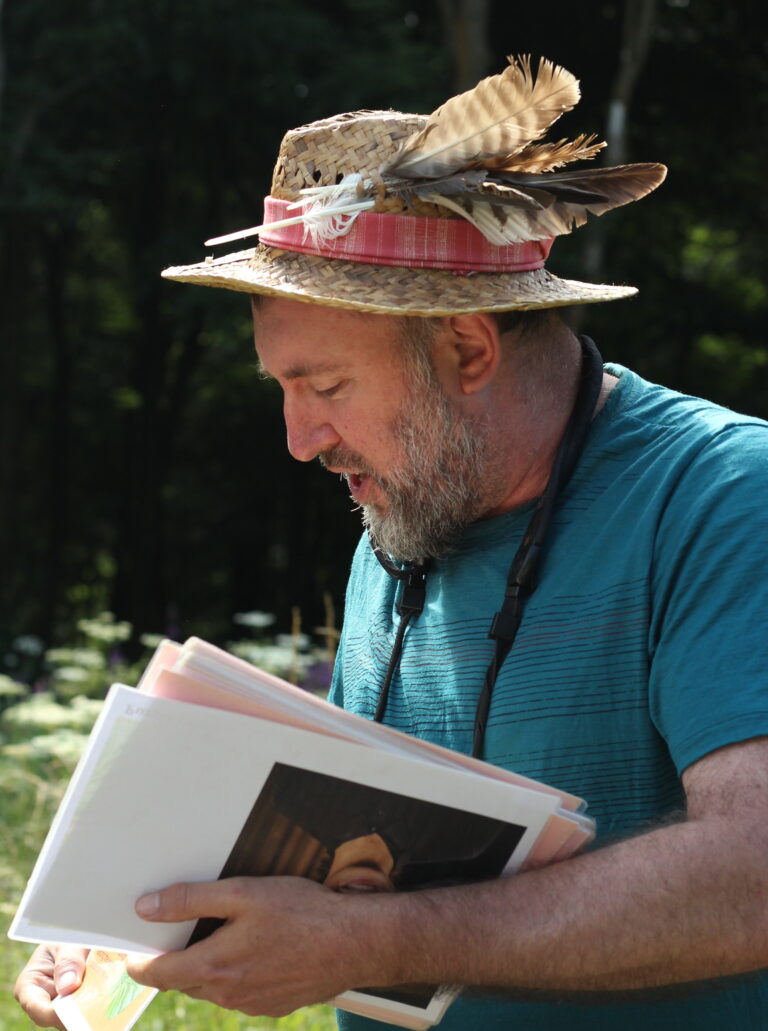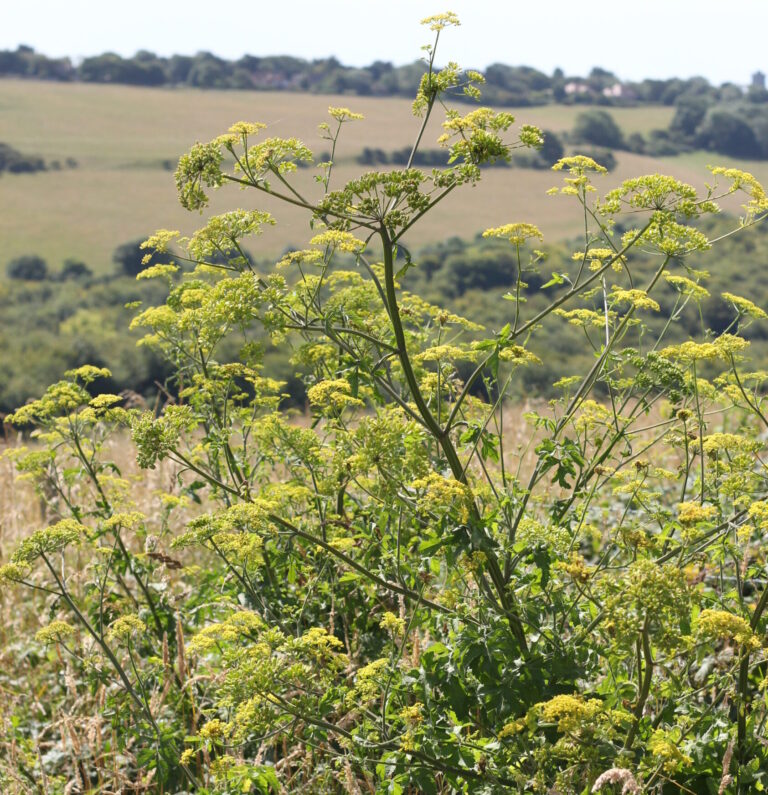Blue, green and red – a wildlife walk at Friston gallops
Wonderful wildlife walk
At last it was a sunny Saturday for the latest SNHS/SAFN wildlife event. This is one of a series of events funded by the Ouse Valley Climate Action fund. This time it was a butterfly walk in Friston forest with butterfly expert and nature enthusiast Michael Blencowe, and specifically looking for the Chalk Hill Blue butterfly in one of their favourite locations.
Blue – Chalk Hill Blue
In Michael Blencowe and Neil Hulme’s book ”The Butterflies of Sussex” there is a suggestion that the Chalk Hill Blue butterfly should be a contender for the title “Pride of Sussex” just as much as the Round-headed Rampion flower! Once this butterfly flew over the hills of Sussex in quite phenomenal numbers, sometimes outnumbering all other species combined!
Numbers have decreased over the years but there have been some stunning population explosions in some years. One was in 2012 at the northern end of the Gallops in Friston forest. On 3 August that year Michael Blencowe and Mike Mullis counted the site over four hours, and their survey concluded a total of 828,000 butterflies on the wing.
We weren’t really expecting to see that many on our July walk, but did hope to at least spot a few! Friston Forest is an excellent area to see butterflies, some of the forest paths and glades are popular with fritillaries and White Admirals, and meadows and hedges have browns, Burnet moths and skippers. Before setting off, Michael went through identification features and preferred habitats for the butterflies we were most likely to see.
The group headed up to the northern end of Friston gallops where the area was once mown short for the benefit of the racehorses that were exercised up here. These days the visitors tend to be human or canine, as a hugely popular area for walking, dog walking. Many of the trails are also busy with cyclists whizzing along.
Green – grassland and crickets
This was once short chalk grassland, ideal for blue butterflies and perfect for the Horseshoe Vetch, the larval foodplant of the Chalk Hill Blue, and ants that play a crucial role in the development of the butterflies.
As we walked up it quickly became apparent that things had changed. No longer shortly cropped grassland, the current meadow although attractive with a variety of flowers and a few brown butterflies flitting about was not ideal habitat. We found no Horseshoe Vetch, and no blue butterflies of any description.
Historically this area was always grazed by what must have been an abundant rabbit population. It seems that at some point in the past few years the rabbits here have vanished (probably through one of the many diseases that can wipe out their colonies).
Without the rabbits’ constant nibbling, the short-cropped turf that the butterflies love has been lost to dominant grasses and other plants. As a result the area no longer holds the incredible populations of butterflies that it used to.
The top of the hill was even worse, huge swathes of Wild Parsnip and Hogweed towered over thick grasses. It clearly was overdue for some grazing to bring it under control.
Not all was lost, we did see butterflies including Marbled White, Large White, Green-veined White, Essex (and possibly other) Skippers, Peacock, Meadow Brown, Small Copper, Gatekeeper and Brimstone. Flowers in the meadow included Bedstraw, Knapweed, Agrimony, Wild Basil, Red Bartsia, Eyebright, Viper’s Bugloss and Clustered Bellflowers.
Grasshoppers chirped all around, and there were a few bees and other pollinators about including a lovely Lace Border moth. This moth is a real rarity – it’s only found at a few sites around the south-east.
The highlight though was probably the Great Green Bush-cricket. Wow what a huge beast, and she was very obliging posing for photographs!
Red Alert
It was a lovely walk but the lack of butterflies, especially Chalk Hill Blues was concerning.
One of the main problems is that 2024 has been a terrible year for many species. The wet weather throughout the Spring and Summer has caused problems but overall, our butterflies are struggling to adapt to the milder, wetter winters we are now experiencing every year.
This is putting a lot of pressure on our butterflies which makes it even mor vital that the habitats that they rely on are in good condition. So, it was heartening to see that The Gallops are now being managed to improve the grassland here.
The signs on site, mention that the site is being grazed and managed for wildlife including the Chalk Hill Blue butterfly. This new management aims to restore a much larger area than before, creating acres of flower-rich grassland for butterflies, bees and other wildlife.
This initiative is being supported by a multi-agency team with experts from Forestry Enterprise and Natural England working with Sussex butterfly experts and Seaford naturalists to manage and monitor the grazing here.
Seaford Natural History Society are helping to survey butterflies, so that trends can be recorded and analysed. This weekly monitoring is essential work, do get in touch with them if you can assist.
During our visit we saw the first signs that the grazing, which only commenced a few years ago, is taking effect. The habitat is slowly starting to improve. Through the actions of the grazing cattle the dense grasses are slowly giving way to patches of finer grasses and flowers. This restoration process will take time though.
Seaford Action for Nature aims to do just that, take action for nature where needed, to protect and restore habitats for wildlife so that we don’t lose our most precious creatures. We understand that land, even nature reserves have to be managed for all the users of the land, that finding that balance can be difficult.
We’ll be supporting this ambitious project to bring back the butterflies to The Gallops and hope to meet with the management team soon to learn more.
Maybe then another year we will be back spotting these amazing butterflies , the lepidopterous pride of Sussex back on Friston gallops.
Many thanks to Michael Blencowe
Seaford Action for Nature
Check out the events page for future events










